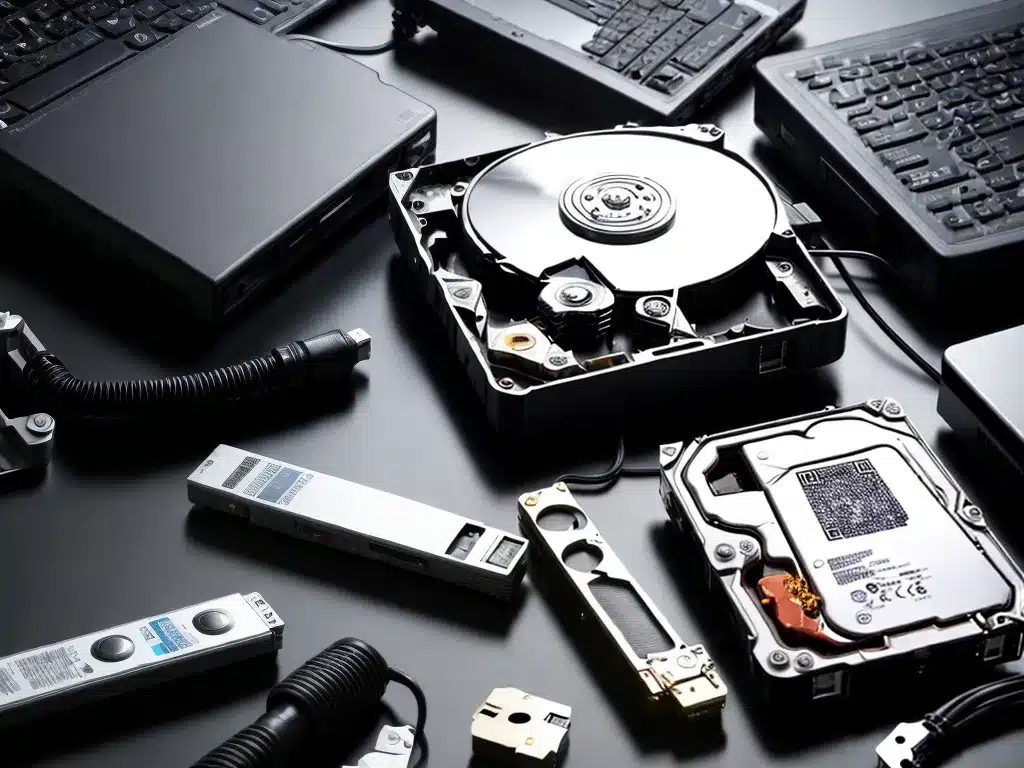
Introduction
As a tech enthusiast who relies on my NAS device for storing important files, few things are more stressful than when it suddenly crashes and I lose access to those files. However, with the right tools and techniques, recovering lost data from a malfunctioning NAS is very possible. In this comprehensive guide, I will walk through the step-by-step process of recovering lost files from a crashed NAS.
Assessing the Damage
The first step is to thoroughly assess the situation and determine the extent of the damage. Here are some key things I check:
Physical Damage
- Carefully inspect the NAS device for any visible physical damage like broken ports or cracked casing. Physical damage can make data recovery much more difficult.
Operational Status
-
Try powering on the NAS – does it boot up or remain unresponsive? Can you still access the storage drives?
-
Check the status lights on the front of the device. Any unusual blinking patterns or colors indicate a deeper issue.
-
Attempt connecting to the NAS over the network – can you ping it or access the admin interface? Lack of network connectivity suggests a corrupted OS.
RAID Status
-
For NAS devices using RAID data protection, verify the status of the RAID arrays through disk utilities.
-
Degraded or failed RAID arrays will need to be repaired before individual drives can be accessed.
Make and Model
- Identify the specific make and model of your NAS device. This will determine available data recovery options.
Accessing the Storage Drives
Once I’ve diagnosed the issue, the next step is accessing the actual physical storage drives inside the NAS. Here are a couple options to access the drives:
Remove from NAS Enclosure
-
If the NAS chassis itself is damaged but the hard drives are intact, remove them carefully from the enclosure.
-
Use a SATA-USB adapter to plug the drives into a separate computer as external USB drives.
Connect Via Network
-
If the NAS is operational enough to come online, mount the drives over the network to access the file system.
-
Use the admin dashboard, terminal commands like
ssh, or tools like DiskInternals to network mount.
Avoid Further Damage
- When handling the storage drives, be extremely careful not to cause further damage and data loss. Even minor new damage can render recovery impossible.
Choosing the Recovery Process
Once I can access the NAS drives on a binary level, there are several paths forward to restore lost data. The optimal approach depends on factors like:
- Type of failure (logical vs physical)
- Filesystem format (EXT4, NTFS, etc.)
- RAID configuration
- Operating system (Linux, Windows, custom NAS OS)
Some recovery options I may use:
Filesystem Repair Tools
-
Linux/Windows have native chkdsk/fsck utilities for diagnosing and repairing corrupted filesystems.
-
Sometimes minor filesystem errors are preventing access to otherwise intact data.
Advanced Recovery Software
-
If the filesystem itself is badly damaged, more advanced forensic recovery software can still extract files by scanning the raw disk sectors.
-
Paid solutions like R-Studio and ReclaiMe offer deep scanning features to rescue data.
Manually Analyzing Disk Sectors
-
In extreme cases with major physical disk damage, manually analyzing raw disk sectors with a hex editor may be the only way to extract critical fragments of files.
-
This requires deep technical skills and is very time consuming.
RAID Recovery Tools
- For NAS devices using RAID, specialized tools like Stellar can repair and rebuild failing RAID arrays before data can be recovered.
Recovering Deleted Files
Recovering previously deleted files from a NAS requires different techniques, since the storage space they occupied is marked as empty/available. Options include:
Finding Remnants in Slack Space
-
Parts of deleted files may still reside in slack space that has not yet been overwritten.
-
Analyze this slack space using data forensics tools to look for file remnants.
Leveraging RAID Redundancy
-
On RAID 1, 5, or 6 arrays, deleted files may still be accessible from another disk in the set that has not been updated.
-
Carefully sync the RAID array to recover these orphaned files.
Using Backups
-
If you have backups of the NAS from before critical files were deleted, you can restore the backup to recover deleted data.
-
Make sure backups are stored offline/offline, not on the NAS itself!
Final Thoughts
Recovering data from a malfunctioning NAS is a complex but very possible process with the right tools, techniques and precautions. The key is avoiding further data loss while determining the scope of damage, accessing the storage drives themselves, and leveraging various data recovery software tools based on the specifics of failure and configuration. With some technical diligence, the likelihood of restoring lost files is very high. Maintaining recent offline backups is also crucial as an additionalinsurance policy when dealing with a crashed NAS.












